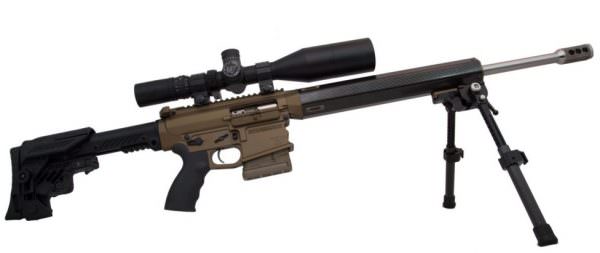Why I Abandoned The AR-15
BY Herschel SmithI can no longer place any confidence in the AR-15 to defend myself in a time of disaster or urban unrest. To protect myself and my family, I have completely switched over to the AKM family of weapons—a semi-automatic variant of the legendary AK-47. I know that somewhere, someone is saying out loud that I am a dumb-ass or a communist. When I first discussed this with one of my close friends, a career Army infantryman with more than 16 months of combat duty spent with the 172nd Infantry Brigade, he just shook his head in disagreement. I remember telling him over some beers, and he just kept asking “Why?” with a look of disappointment and bewilderment on his face.
The M16A2 was my primary weapon for my entire career in the United States Air Force; I knew it inside and out. I was one of the few USAF engineers I knew who loved target shooting, going to the range, hell, I even liked to clean guns. So why walk away from a weapon platform I had used or owned for over 20 years? The answer comes down to two major reasons: supportability and simplicity.
Any military or company that uses AR-15s/M4s has much deeper pockets than I will ever have. Major corporations and military units typically have a robust supply system that can provide an individual any desired replacement part they may need. This is necessary, because the variation in parts from manufacturer to manufacturer is immense, making interchangeability difficult.
The buffer spring and buffer weights alone have more than a dozen different variations depending on barrel length and number of coils on the buffer spring. Then, stop and consider the rifling twist rates in the weapon’s barrel and what projectile works optimally in them. Here is a sample of the variations and options on buffer weights alone.
[ … ]
The word simplicity might cause people to think that the AR-15/M4 is a difficult weapon to operate, and that is not the case at all. When I use the word simplicity, I think of overall use and maintenance of the weapon. How maintenance-intensive is it? What type of lubricant do I have to use for my situation?
With the AR-15/M4, there is an entire segment of the shooting world that will launch into heated arguments about what lubricant works best. I have seen the debates between CLP versus Frog Lube versus Fire Clean. Running the gun ‘wet’ or ‘dry’ is another topic of debate. I have even heard people who say they use WD40 or Castrol Slick 50 on their AR-15s/M4s.
Properly lubricating a weapon isn’t rocket science, but improper lubrication can lead to the weapon jamming at the most inopportune moment. In the case of over-lubrication, in a dusty or sandy area, excessive dirt and debris can accrue on the weapon’s working parts, causing stoppages and malfunctions.
Consider my selection. The AKM can be lubricated by just about anything that has some degree of viscosity. Bearing grease, lithium grease, motor oil, 80W 90 gear oil, the tears of liberals, the blood of unicorns, you get the idea. There is a scene in the video below (at about the 20-second point) where you can see an AK-47—buried in the dirt and clay of Africa for 18 years—rendered operable with only a can of motor oil.
Good grief.
And AR-15s can be made to function with a dab of motor oil too. And he acts like there’s no such thing as AR-15 stress tests out there on YouTube. I’ve linked and embedded so many they’ve almost become boring to watch now.
So it all boils down to this after reading this tiresome and stolid article. The author doesn’t like to think about anything, doesn’t like variability, doesn’t like to be able to modify his gun, doesn’t like variants on a theme, and doesn’t want to have to worry about the engineering mechanics behind the rifle or proper selection of components. Therefore, he has found himself some canned excuses to jettison the AR-15. He’s lazy.
Eugene Stoner is unimpressed. I am too. If this is the best that web site can do, I won’t be returning. This piece is not even a thinker piece that makes you ponder the more complex issues behind gunsmithing or engineering. It’s completely un-compelling.
The telltale sign that it’s going to be a bad article was in this sentence: “I was one of the few USAF engineers I knew who loved target shooting, going to the range, hell, I even liked to clean guns.”
So there you have it – what a USAF “engineer” thinks about guns. Stick to airplanes. Go back to something you’re good at. I guess.
“Why I abandoned the AR-15” are words you’ll never see here at this web site except in mockery.





